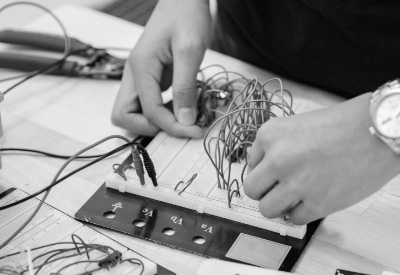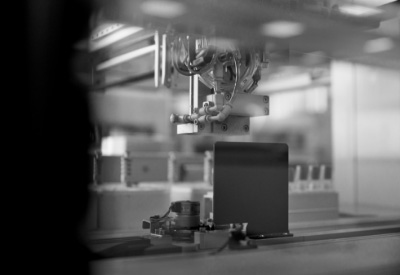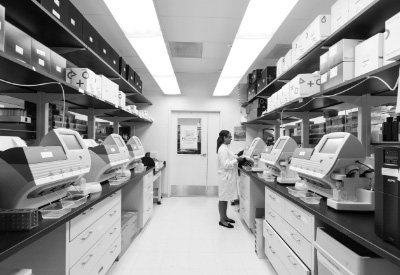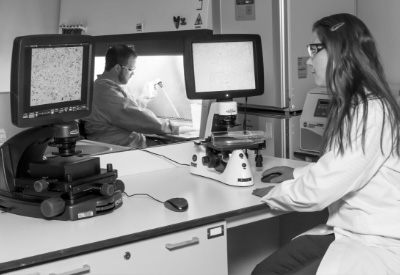July 2025 | Tips & Information
Low‑Power or High‑Power? Choosing the Right Battery for the Job
When engineers design electronics, choosing the right power source is crucial. Understanding the difference can be the key to a device’s success, longevity, and reliability, and there are several different battery types to choose from.
City Labs’ NanoTritium™ batteries are designed specifically for ultra-low-power systems that require consistent, dependable energy. This article breaks down the two battery categories, explores real-world use cases, and explains how NanoTritium™ technology fits into the bigger picture.
High‑Power Batteries
High-power batteries—such as lithium-ion packs—are designed to deliver relatively large currents (tens to hundreds of milliamps or even amps) “on demand.” These are essential for:
- Powering motors, actuators, LEDs, or communication bursts
- Handling startup surges and rapid power consumption
- Applications where recharging is practical, or capacity is limited
- Devices requiring fast charging and discharge cycles
The downside? High-power batteries tend to be bulky, heavier, and degrade faster if used continuously or in harsh environments. They often require thermal management and maintenance, and they may fail prematurely due to thermal stress or repeated cycling.
Low‑Power Batteries: Long‑Term, Consistent Energy
Low-power batteries, on the other hand, are built to deliver nano- to milli-watt-level current over many years to low-power microelectronics.
This makes them ideal for:
- Deep-space sensors
- Medical implants (e.g., pacemakers)
- Structural or environmental monitoring
- Secure and industrial Internet of Things (IoT) devices
Low-power designs focus on longevity, reliability in extreme environments, and maintenance-free operation. By avoiding high drain and heavy infrastructure, they enable highly compact, autonomous systems that can run unattended for decades.
Why NanoTritium™ Batteries Fit the Bill
City Labs’ NanoTritium™ batteries reside in the low-power category, harnessing betavoltaic technology to yield nano to micro-watt outputs continuously for over 20 years. These nuclear batteries are excellent for scenarios where small form factor, compliance with harsh conditions (radiation, temperature extremes, vibration), and long-term reliability are essential.
However, they can still be incorporated in some higher-current applications. For systems requiring mA-level bursts, the NanoTritium™ battery can typically be paired with a capacitor bank—charging slowly and then releasing stored energy in brief spurts.
A great example is the M3 “Monarch” board, which utilizes NanoTritium™ batteries and thin-film capacitors to power periodic broadcasts of temperature and light data, maintaining a low average draw while supporting pulses as needed.
This configuration offers a best-of-both-worlds solution:
- Ultra-long life and maintenance-free nature
- Periodic high-current bursts for communication or sensing
- Compact and integrated design, ideal for millimeter-scale devices
Real-World Applications
Space
Deep-space probes, lunar landers, and satellites that need to operate for extended periods in darkness cannot rely on solar power or batteries that degrade quickly. NanoTritium™ batteries are perfect for these applications, and experience no degradation when exposed to the vacuum or harsh radiation of outer space.
Medical
Implantable medical devices demand pinpoint reliability and extreme safety. Low-power betavoltaic energy is a perfect match for devices like pacemakers. NanoTritium™ batteries’ solid-state construction, lack of heat generation, and steady output reduce risk and enable maintenance-free implants.
Monitoring & Structural Sensors
From bridges to oil pipelines, industrial structures demand long-term condition monitoring. NanoTritium™ batteries can power vibration, strain, or corrosion sensors and record data over decades without the need for servicing, significantly reducing costs and access risk.
Explore structural applications
Battery Comparison at a Glance
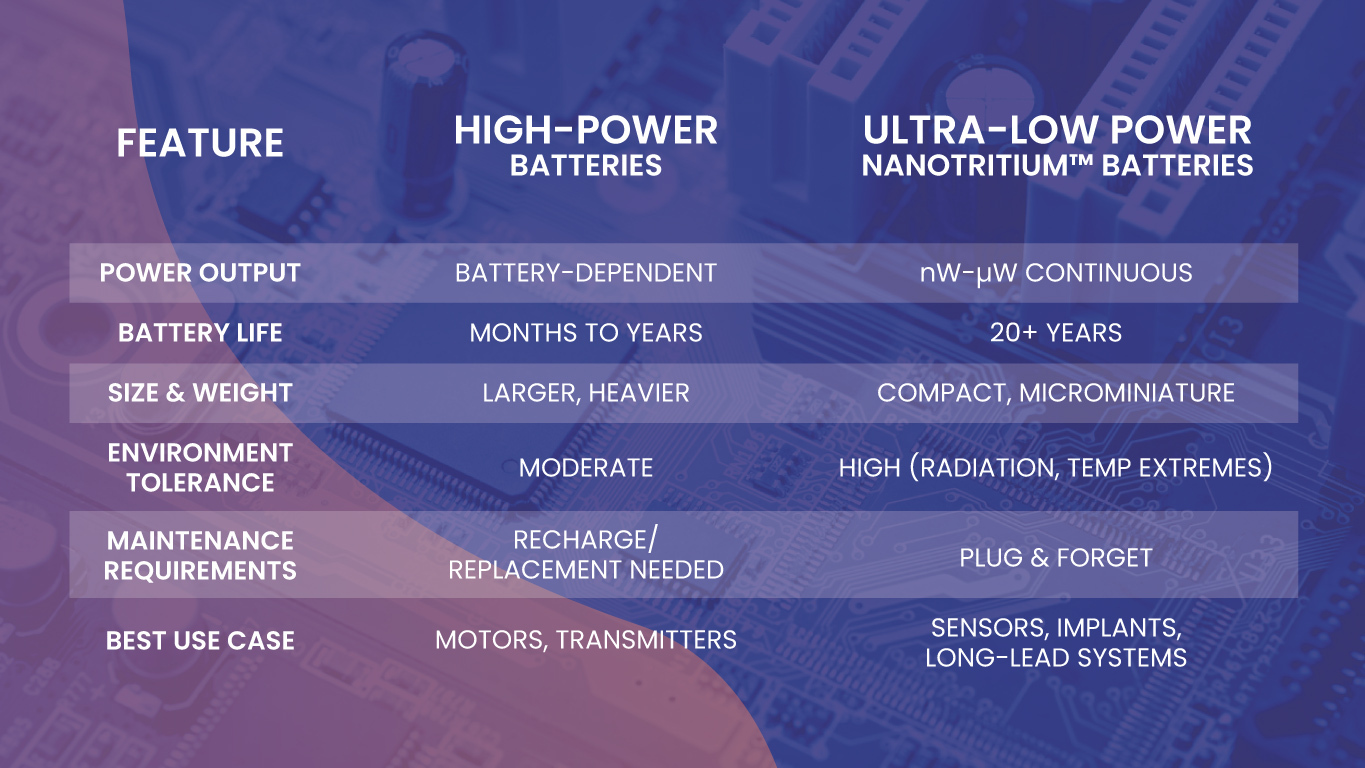
Why it Matters for Engineers
Choosing the correct power source means the difference between a device that lasts a lifetime and one that fails early—or costs too much to maintain. Engineers working on space missions, medical systems, or industrial monitoring need to understand the trade-offs:
- High power ≠ longer life
- High capacity can mean bulk, heat, and maintenance headaches
- Low-power + storage = reliable, autonomous, long-lived systems
- Betavoltaic options like NanoTritium™ batteries are complementary, not universal replacements
Conclusion
For ultra-low power applications that must run autonomously in extreme conditions for years, NanoTritium™ batteries provide an unmatched solution.
If you’re building a device for space exploration, medical reliability, infrastructure monitoring, or anywhere long-term autonomy is crucial, contact City Labs to explore how NanoTritium™ batteries can power your mission-ready solution.





